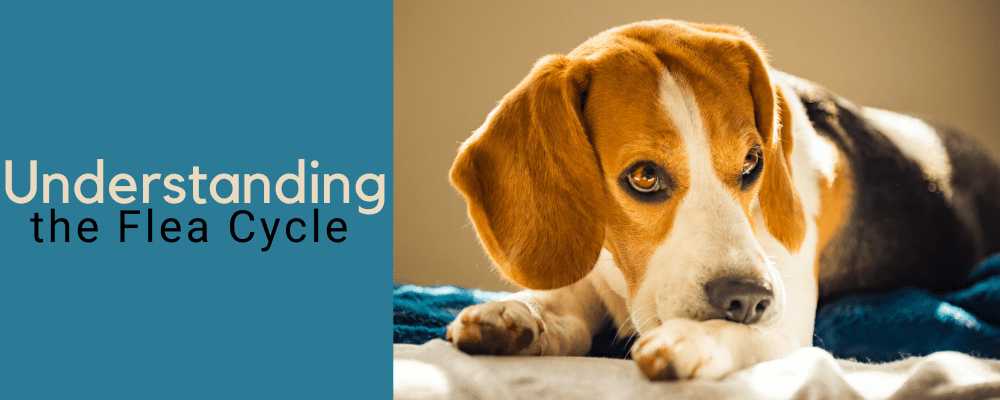As the weather warms up and gets more humid, fleas start to get more active and become more of a nuisance. Pet owners are no strangers to fleas and the problems they can cause. But these pesky little insects are capable of being an issue even for those without pets.
When it comes to eliminating fleas from your pet and from your home, there are some key things to consider. First, it is very important to be familiar with and understand the life cycle of the flea when you are trying to eradicate their presence completely.
There are four stages in the life cycle of a flea just like any other insect: egg, larva, pupa, and adult. For every flea you see on your pet there are 100 in the environment in egg, larvae and pupal stages. It’s not just about killing the adult fleas; we have to control the juvenile stages too.
Depending on the environmental temperature and humidity levels, the total life cycle will take anywhere from a couple weeks to many months. Optimal conditions for fleas are between 70-85°F and 70 percent humidity.
The Adult Flea
The adult flea is the stage of the flea life cycle you are most likely to see. They jump onto your pet to feed and breed. The female flea is a prolific egg layer, producing up to 50 eggs per day. Egg production can continue for as long as 100 days, which means that a single flea can produce thousands of eggs.
Adult fleas don’t usually stay on your pet for long, often being groomed out after 7–14 days. However, on older or more obese animals who cannot groom as well, adult fleas could remain for 2–3 months. If you leave your pet untreated or miss a flea treatment, this gives ample opportunity for a flea infestation to develop.
Flea Eggs
Flea eggs are small, white and oval-shaped. They have shiny shells, so they slip easily through your pet’s coat and land wherever your pet is. This could be your sofa, bed or carpet – anywhere in your home.
Flea eggs usually hatch after 5–10 days depending on temperature and humidity.
Flea Larvae
The flea eggs hatch into flea larvae, which feed on organic material, such as shed skin cells (from pets and people) and ‘flea dirt’ (flea feces) from adult fleas. The latter, comprising mainly of dried blood, is a good source of protein for the developing flea larvae.
Flea larvae are negatively phototaxic, meaning they crawl away from light. They crawl deep into carpets and under base boards – anywhere dark and warm.
Flea Pupae
Flea pupae are particularly troublesome. While inside the pupal cocoon, flea pupae cannot be killed by any insecticides. They are also very sticky, so debris from the environment, like carpet fibers, dust and hair, stick to them helping create a camouflage.
In optimum conditions, flea pupae hatch after four days, but they can survive for over 140 days until the most beneficial circumstances arrive. This could be when you or your pet comes into the room. They can even get active in the winter when you turn your central heating on.
If you are in the unfortunate situation of a flea infestation, remember that we have to eliminate the juvenile stages as well as the adults. Call us for advice on what to do.
